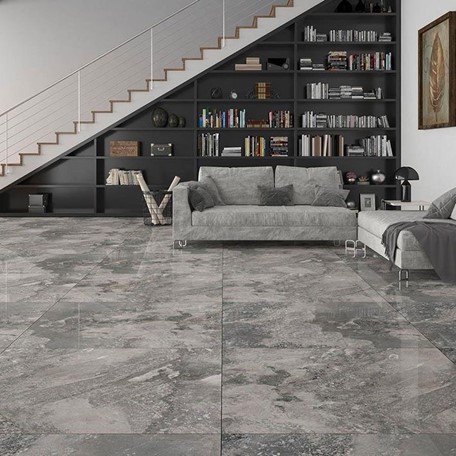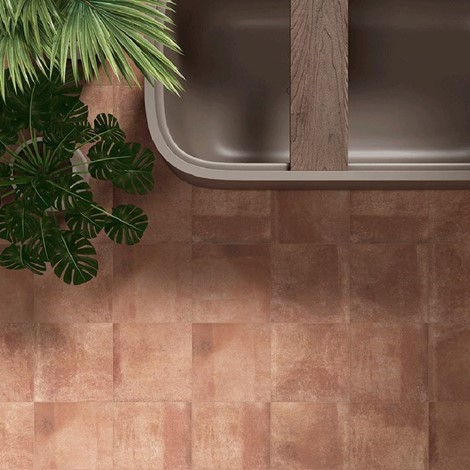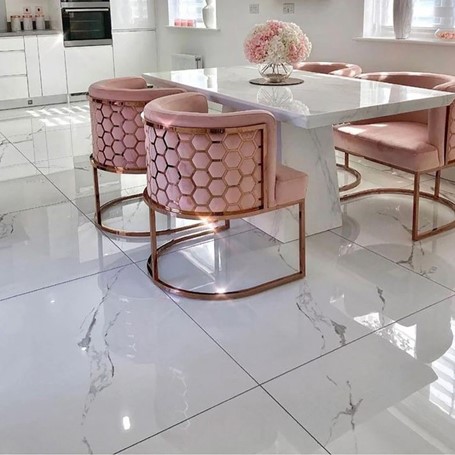While we all enjoy picking out tiles that look fantastic and seamlessly match our aesthetics, did you know your tiles also need to suit your application?
To figure out what tiles are best for a bathroom, kitchen and living room, different ratings can be applied. An important tile rating is the PEI rating, which is given to ceramic and porcelain tiles to decide which ones are perfect for your needs.
PEI ratings can be tricky to understand and remember, so we’ve created this quick and easy guide to help you. If you’re looking for information on PEI ratings, or for guidance on which PEI rating and tile you need for your project, keep on reading.
Table of Contents
- What is a PEI rating?
- What do the ratings mean?
- How do the tests work?
- What are the ratings?
- Wall and floor tiles
- Final thoughts
What is a PEI rating?
Following standards placed by the Porcelain Enamel Institute (PEI), tiles can receive a PEI rating to indicate hardness, durability and resistance to abrasion. In other words, how prone the glaze is to scratches and scuffs. This rating then allows you to identify which tiles are suitable for your applications and which aren’t.

What do the ratings mean?
Since tiles are crafted for specific uses, like walls or floors and sometimes both, it’s important to pick the right tiles for your needs. PEI ratings function on a scale of 0 to 5, 0 being appropriate only for wall applications and 5 suiting heavy-duty floor traffic.
PEI ratings refer to a tile’s enamel glazing. They don’t reflect the fracture strength of the tile, or the thickness, and don’t account for slip resistance. If you’re looking into slip resistance, check out our Tile R rating guide.
How do the tests work?
To decide the PEI rating of porcelain or ceramic tiles, tests are run on the surface wear layer of a tile’s enamel glazing. These tests use large machines that press and roll steel ball bearings over the tile surface to mimic different levels of traffic and footfall.
The test is carried out to determine the number of revolutions it takes for abrasions to appear. This number will dictate the PEI rating given to the tested tile and what applications it is suitable for.

What are the ratings?
You might be wondering, what is a good PEI rating?
While it can be hard to define ‘good’, as it largely depends on what you want to use your tiles for, higher PEI ratings are able to endure heavier foot traffic and better resist abrasions. Below we’ve outlined each PEI rating and what applications the tiles in the categories suit.
That said, you should always follow any guidelines and instructions granted by the manufacturer of your tile. They’ll know the finer details and have their own recommendations.
PEI 0
PEI 0 is the lowest rating. It indicates that a tile is only suitable for use only on walls.
PEI 1
PEI 1 tiles are suited for use on walls, including shower surrounds. These tiles shouldn’t be used for floor applications, they won’t withstand footfall in the long term.
PEI 2
Tiles rated PEI 2 are suitable for walls and areas with light footfall. They can be installed in less busy areas of the home, such as cloakrooms and ensuites, where soft footwear or no shoes are worn.
PEI 3
Designed for moderate footfall, tiles with a PEI 3 rating are for bathrooms and living areas in the home, but not anywhere with heavy foot traffic and high levels of footfall, like kitchens.
PEI 4
What is a PEI rating 4? Able to withstand high traffic, PEI 4 rated tiles can be installed all throughout the home and in commercial areas with medium footfall. These tiles are suitable for walls and floors in hallways, conservatories and kitchens.
PEI 5
The highest rating is PEI 5, which marks tiles suitable for both residential and commercial use in public areas with heavy footfall. Applications include offices and shopping centres.
Wall and floor tiles
Some tiles don’t offer a PEI rating. Instead, they are often listed per application, like whether they are suitable for walls or floors. PEI ratings aren’t the only important factor when choosing tiles – you should also look at style, weight and slip-resistance for areas subject to water.
Wall tiles won’t undergo as much wear and tear as they’ll never be underfoot. This means they can afford to be thinner and lighter, which allows them to adhere better without falling.
Floor tiles, on the other hand, benefit from high durability. They need to endure footfall to some capacity, depending on the application, and are best when they offer good stain resistance for easy cleaning. To enhance safety, prioritise R ratings and textured finishes.

Final Thoughts
After reading this guide, hopefully, you have a better understanding of PEI tile ratings. While they aren’t the only factor to consider, they’re a good place to start. Knowing the difference between ratings can help you make informed decisions about which tiles are best for your application. Refer to this guide whenever you need to, whether you’re starting a whole renovation or refreshing your space.














